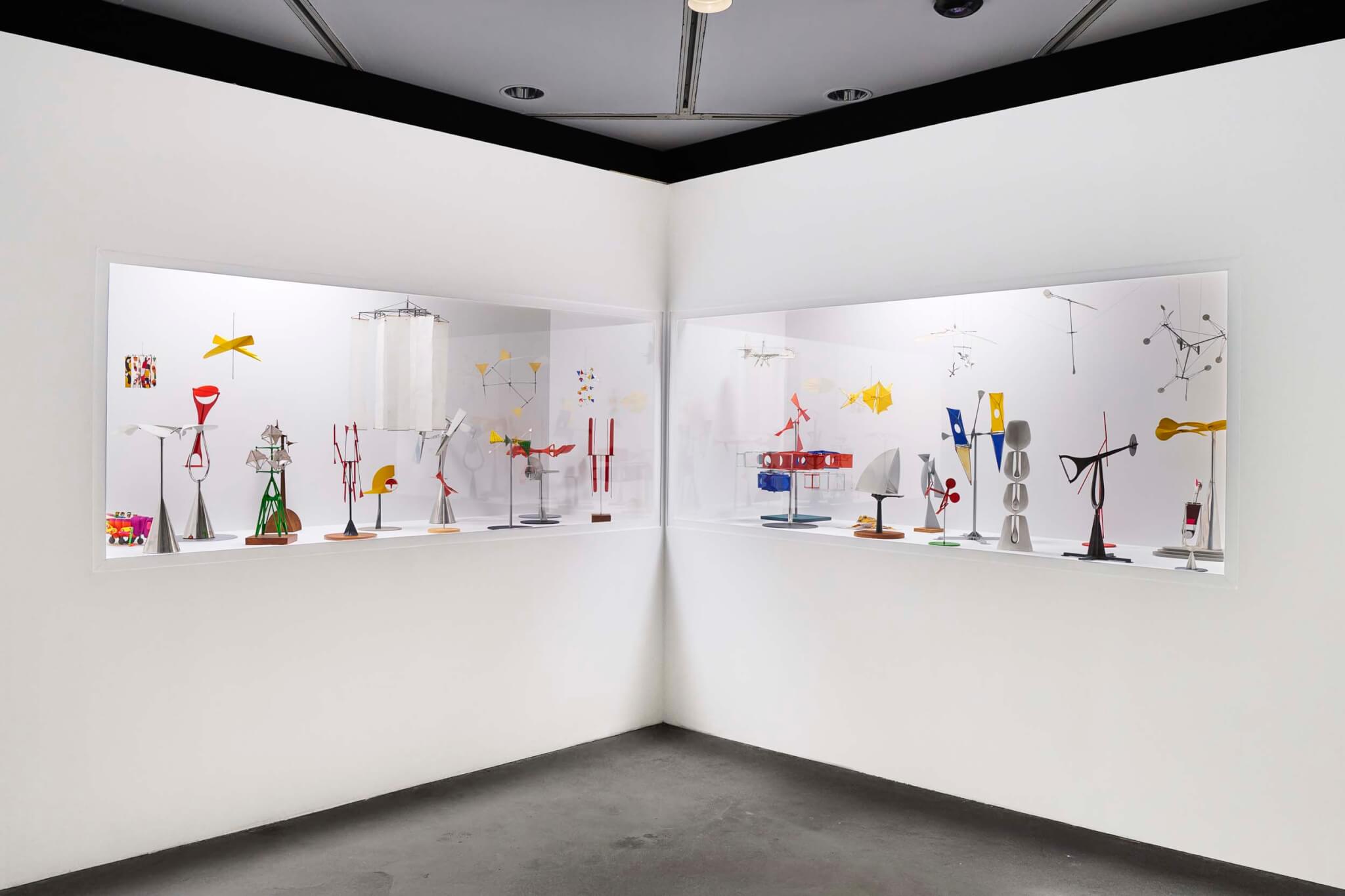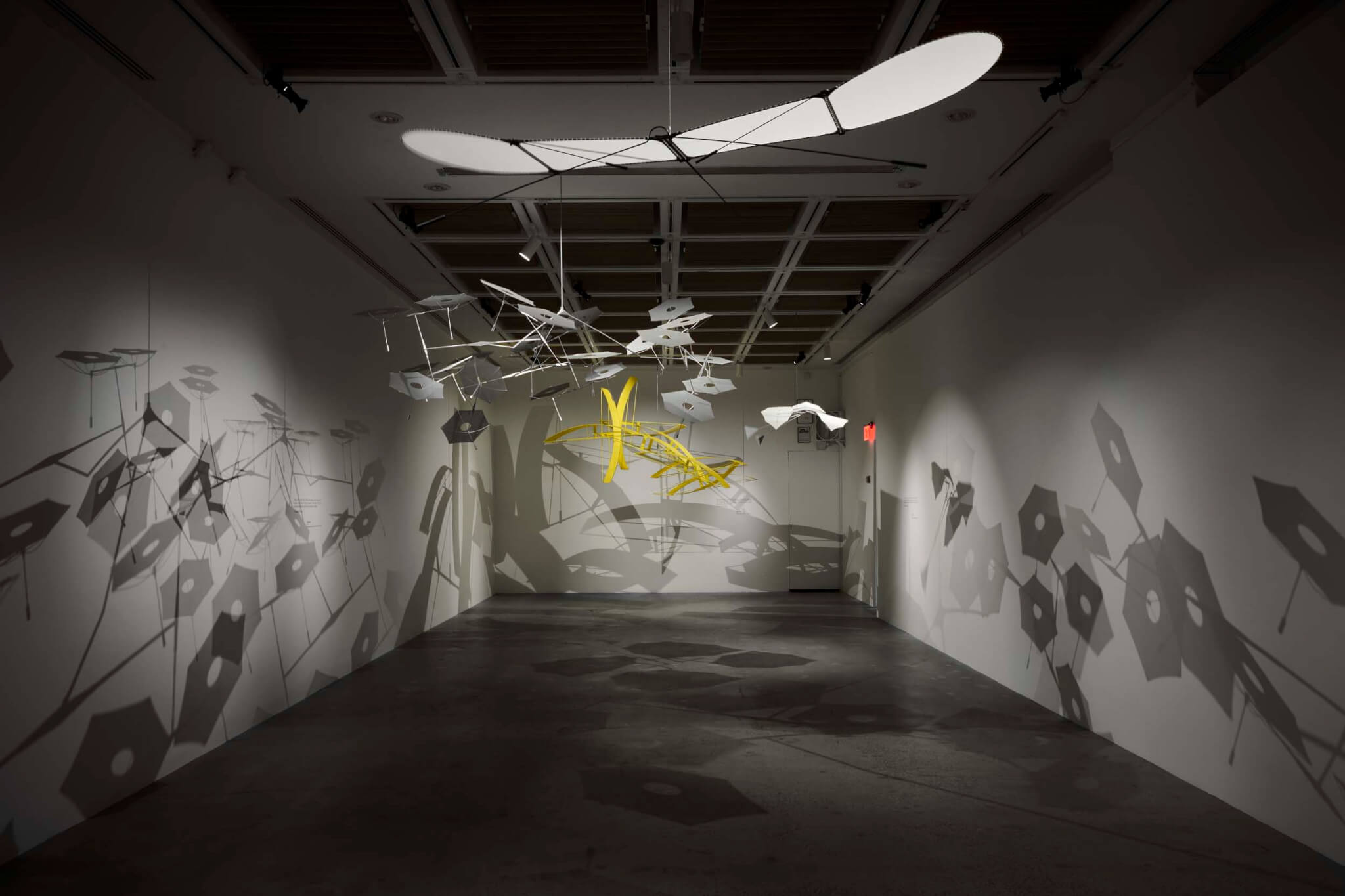This summer, the Japan Society in New York is staging the first-ever U.S. exhibition looking at the kinetic sculptures and other life-engineered works of Osaka-born artist Susumu Shingu, after a remarkable six decades in practice.
Known for his open-air Wind Museum project in Japan and continued collaborations with Renzo Piano, I. M. Pei, and other architects, Shingu’s art elucidates the latently invisible, boundless properties of nature while seeking to heighten an awareness of them in its audience—likewise revealing his own ingenuity, creative spirit, and gratitude for the everyday.
Elated!, is a career-long retrospective of Shingu, spanning from his start as a painter in Rome to his favored use of common architectural materials in the pursuit of biomimetic commissions and activations that belie his claims to being the “sculptor of the wind.”

Steel, aluminum, cloth, and carbon fiber-made contraptions shaped by physics and staged in parallel to the urban geometry of spaces therein remind us of the unseeable laws governing the world in ways attributable to his forebears in the medium (Frank Stella, Naum Gabo, and László Moholy-Nagy). The lasting influences imparted during an advantageous 1965 residency at a shipbuilding yard in Osaka are also traced through his sketchbooks, maquettes, free-standing and suspended “superlight” organic sculptures, and scale models, culminating in several new site-specific pieces that respond to the Japan Society’s Junzo Yoshimura–designed architecture. This includes the recent hydraulic sculpture Silent Water (2024) that keys the visitor experience by activating its foyer’s indoor garden pool. Its presence instructs viewers on the experiments with centripetal force and water first seen at the 1970 Japan World Exposition in Osaka, thereafter inviting them to even more furtive moments of quiet contemplation.

The exhibition also features the children’s books Shingu began illustrating at the behest of his friend Issey Miyake in 1975 to finally showcase the full depths of his multidisciplinary prowess. There are a total of six parts altogether. Michele Bambling, the Japan Society Gallery’s senior director, said the combination of each “invites deep engagement—encouraging audiences of all ages to reflect, play, and discover.”

Elated! is on view at the Japan Society in New York through August 10. This summer the venue will also host programs related to the restored Nakagin Capsule module now on view at MoMA.
Josh Niland is a writer and editor with work published in Artnet, Architectural Digest, Artforum, Hyperallergic, WHITEHOT magazine, and the Boston Phoenix. He holds a degree in philosophy from Boston University and worked previously as the featured staff writer at Archinect.
→ Continue reading at The Architect's Newspaper
